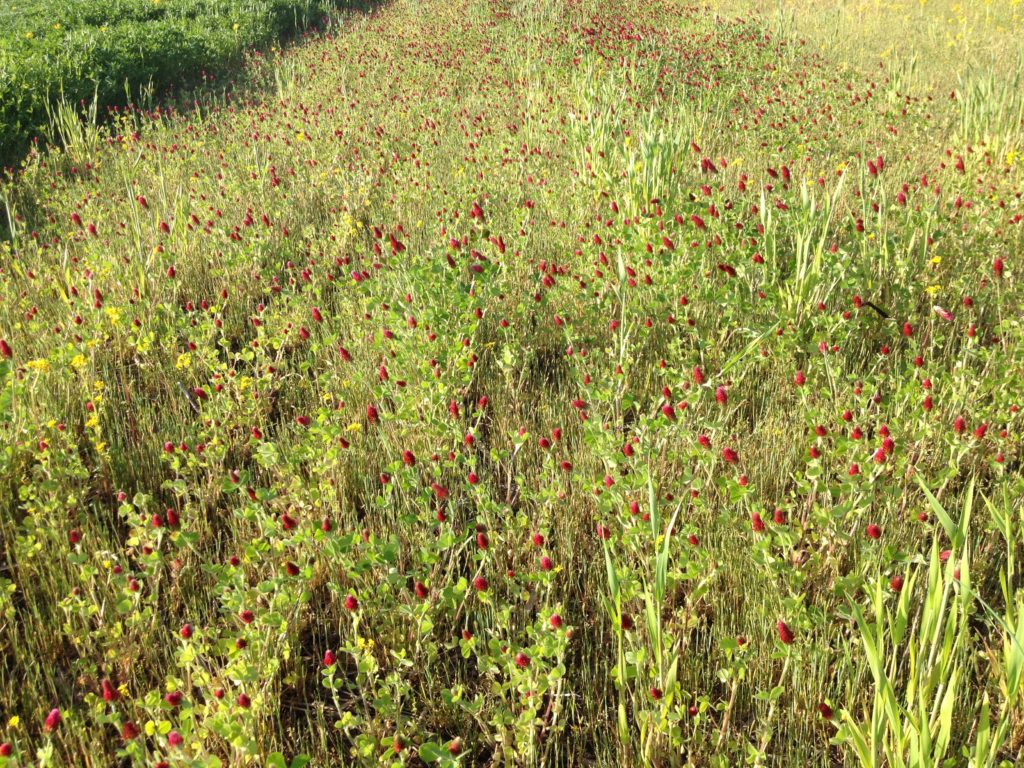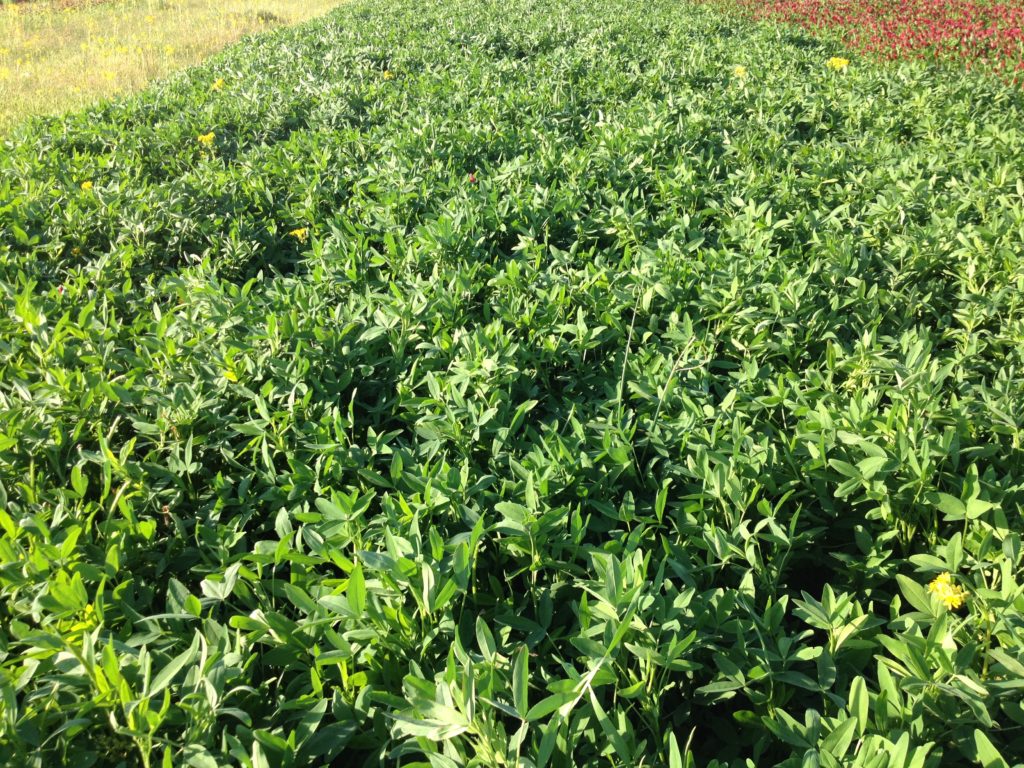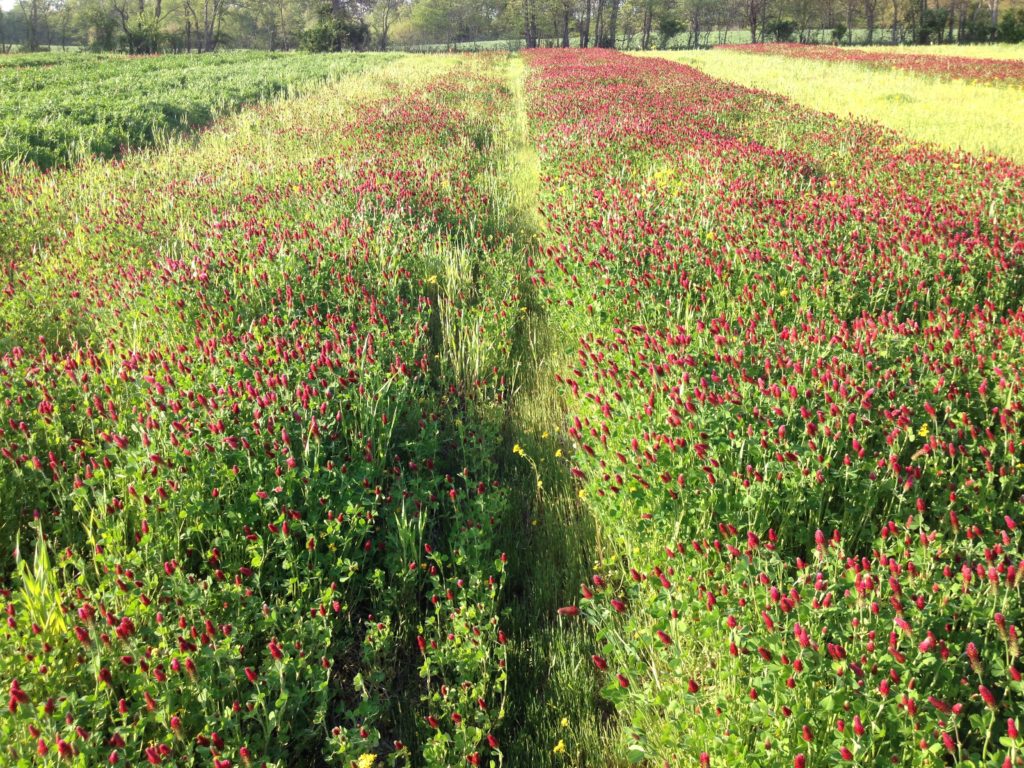Plant breeding improvements have given the industry better alternatives to industry-standard cover crop varieties
When Dixie Crimson Clover was released in 1953, its trait for hard seeds filled a huge market need for a re-reseeding pasture legume. The ability it gave producers to easily add natural nitrogen and protein into pasture quickly made it the industry standard variety – a title it still holds today. However, after decades of no varietal or production oversight, Dixie Crimson Clover, no longer has any trait consistency.
Finding consistent alternatives
To get a better understanding of how the industry standard variety would perform against quality-controlled varieties, University of Illinois researcher Nathan Johanning conducted a trial at the Ewing Demonstration Center. Planted in late September and terminated the following May, Dixie Crimson Clover and three alternative clover varieties – Kentucky Pride Crimson Clover, Frosty Berseem Clover, and FIXatioN Balansa Clover – were analyzed for winter survival, root depth, weed suppression, biomass, nitrogen fixation and date of full bloom.
On average, the three alternative clover varieties had a 39% greater winter survival rate and average rooting depth than the industry standard (see Figure 1). Kentucky Pride Crimson Clover, Frosty Berseem Clover, and FIXatioN Balansa Clover also averaged a 67% advantage for weed suppression over Dixie Crimson Clover.
Fall and spring biomass and nitrogen in biomass measurements were taken (see Figure 2). While Dixie Crimson had the second-greatest biomass measurement in the fall at 2,291 pounds per acre, it rapidly declined to 911 pounds per acre by the spring. On the contrary, FIXatioN Balansa Clover’s 693 pounds of biomass per acre grew to 8,401 pounds per acre by spring.
Dixie Crimson’s 14 pounds of nitrogen per acre contribution also seemed negligible compared to FIXatioN’s 269 pounds of nitrogen per acre.
Advancements in cover crop varieties
While it should be noted that Dixie Crimson Clover was an achievement in its time, plant breeding advancements give agricultural producers much more powerful and fit-for-purpose tools. Echoing remarks from North Carolina State University’s Dr Chris Reberg-Horton at Grassland Oregon’s 2018 Cover Crop Summit, inconsistent corn varieties from the 1950s would never be accepted by the market – and cover crop varieties shouldn’t be viewed any differently.
Just like corn variety improvement, a lot of research and investments have gone into developing cover crop varieties with improved trait performance and consistency. Whether you are selecting a legume like a crimson clover or an annual ryegrass, making selections based on trait performance is essential to get the most from your crop.
The future of cover crop varieties is here. It’s time to ditch Dixie and move forward.




To download high-resolution images from this article, click HERE.
Editor’s note:
Cover Crop Corner is a new educational column from the forage application company GO Seed (Grassland Oregon) and is free for print or digital distribution by media outlets. To be added to the distribution list, please email info@goseed.com
Click HERE for a printable PDF version of this article





